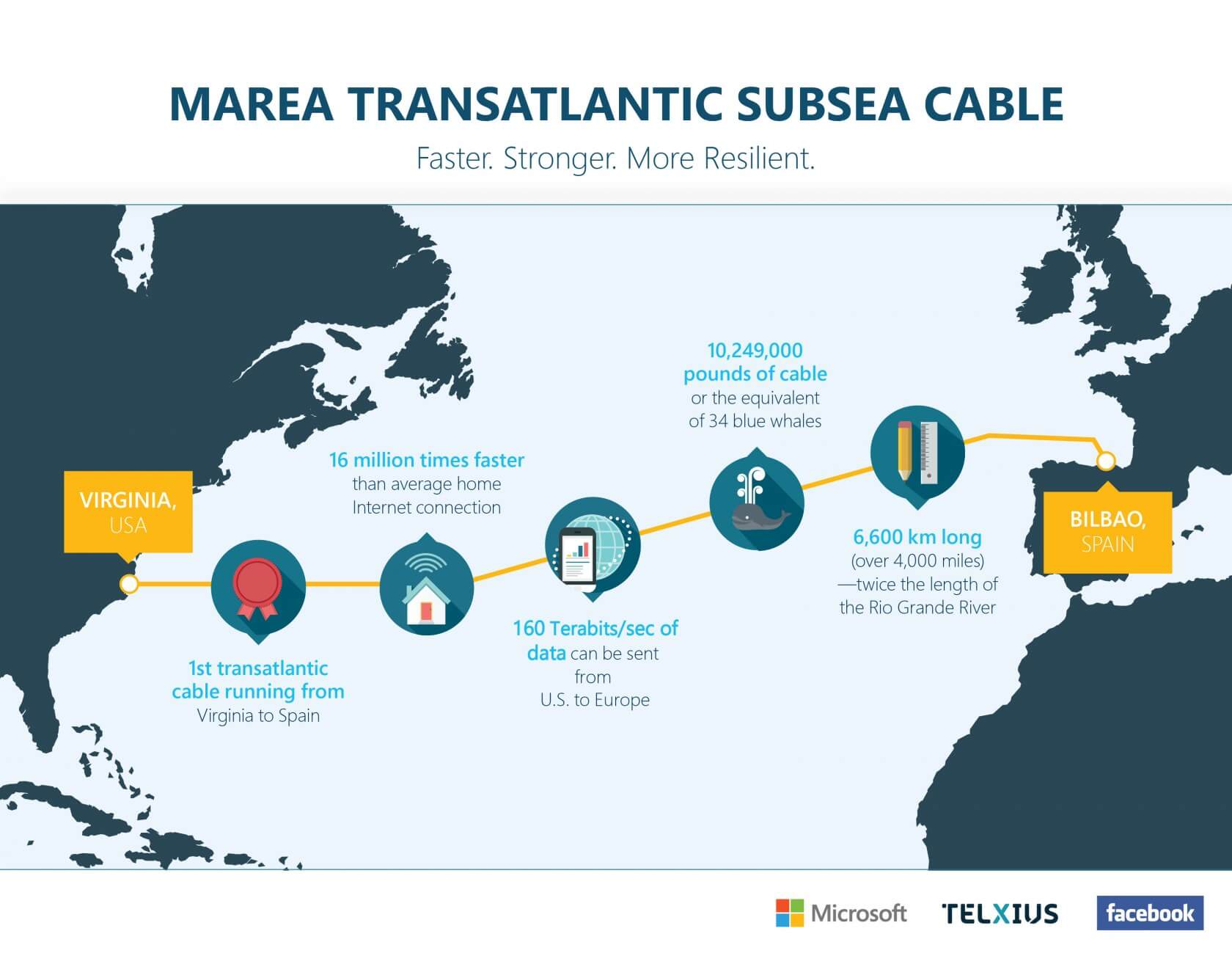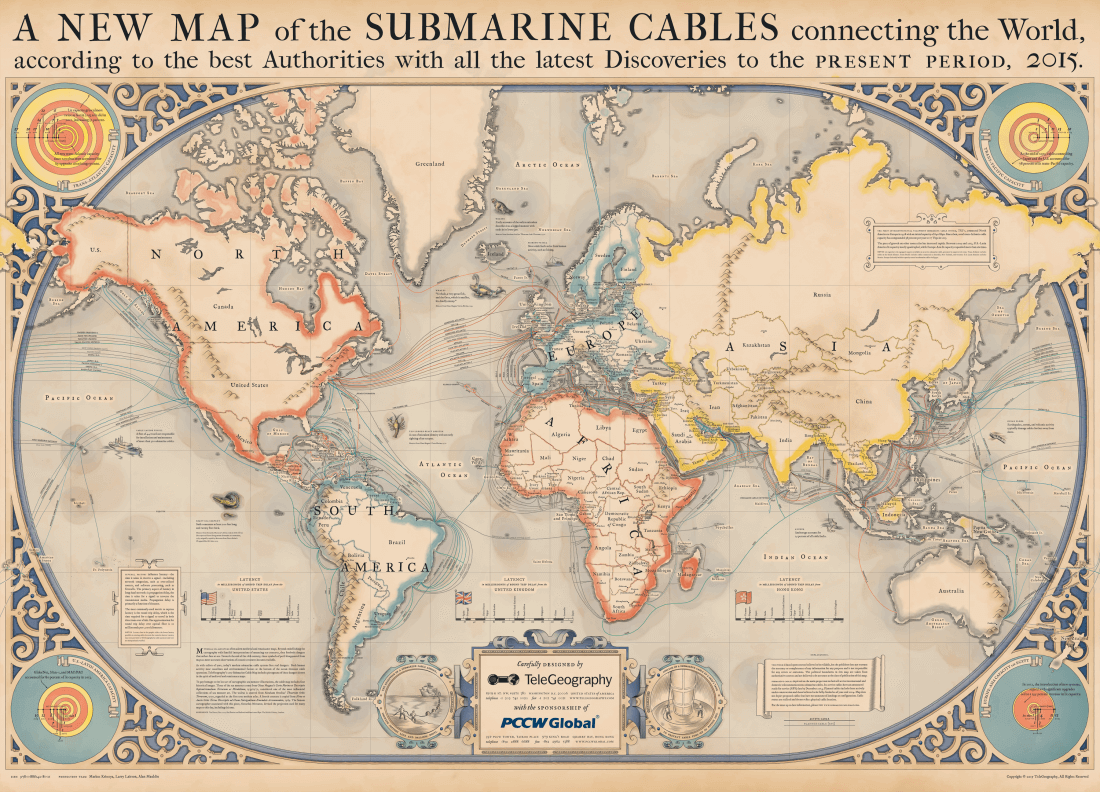DPennington
Posts: 88 +32
Why it matters: The MAREA transatlantic subsea cable, the result of a joint effort between Facebook and Microsoft, achieved a record data transfer speed of 26.2 Tbps on a pair of its fiber optic cables during an experiment. This experiment yielded a 20 percent increase in the theoretical maximum as it was previously thought that the maximum transfer rate per fiber pair was 20 Tbps.

In 2016, Facebook and Microsoft joined forces to build and deploy the highest-capacity undersea cable in history, dubbed the MAREA cable. The cable spans from Virginia Beach to Bilbao, Spain, and had a design capacity of 160 Tbps, with each of the line's eight fiber optic pairs capable of 20 Tbps.
Thanks to a recent experiment using 16 QAM modulation, the transatlantic cable was able to achieve speeds that are 20 percent faster than those theoretical maximums. The experiment achieved a data transfer rate of 26.2 Tbps on one of the fiber pairs.

The MAREA cable, which was conceived in order to help meet the ever-increasing demand for high-speed connections to the cloud, was able to reach these transfer rates with no physical modifications to the line. This is significant because it suggests that other undersea lines may be able to achieve speed upgrades without having to spend hundreds of millions on laying new cable.
Average transfer rates on the MAREA cable are currently "only" 9.5 Tbps, so it will likely be some time before the speeds demonstrated in the experiment become commonplace.